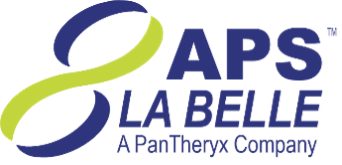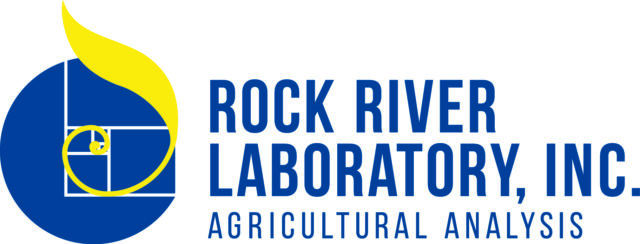On the day in which the U.S. Congress passed three historic free trade agreements, the grassroots dairy producers of the Dairy Policy Action Coalition (DPAC) were in the nation's capitol stressing the need for policies that position dairy farmers to benefit from these trade opportunities. DPAC lauded the October 12 introduction of the much-anticipated Dairy Advancement Act by Senator Robert Casey, Jr. (D-Pennsylvania). Senate Bill 1682 wasthe highlight of discussions on Capitol Hill throughout the day. It contains key elements of DPAC’s Cornerstones for Change.
The bill repeals the Dairy Product Price Support program, which saves taxpayer dollars and sends a clear signal to global trading partners that the U.S. will be a dependable supplier of dairy products that are in demand and will clear those inventories even when market prices are low.The bill also makes available low interest loans to manufacturers to encourage investment in retrofitting their plants to adjust to this change by focusing on making and marketing products that have broader demand.
"Dairy is the one sector that has really struggled in the midst of a bright economic picture for agriculture,"said Dennis Wolff, a lifelong dairy farmer from Millville, Pennsylvania,who served as a former state secretary of agriculture and is now a relations consultant for DPAC through Versant Strategies.
"The policy decisions being made now by the Senate and House Ag Committees, as they consider their recommendations for the Joint Select Committee on Deficit Reduction, will be critical to the futures of our dairy farm families.
"The Dairy Advancement Act improves market transparency and starts the process of simplifying the milk pricing system. At the same time it recognizes the need for a modest safety net and for expandedrisk management choices for producers."
“We applaud Senator Casey for introducing the Dairy Advancement Act. Unlike other proposals, which make the system even more complex, this billcalls for reforms that simplify and improve the way our milk is priced,” said DPAC chairman Cliff Hawbaker, a dairy producer from Chambersburg, Pennsylvania.
“As dairy farmers, we are looking for less, not more,government cost and control of our industry. We see the opportunities in the world markets and realize we are part of a world supply-and-demand balance,” observed Duane Hertzler, a dairy producer from Loysville, Pennsylvania.
“We thank Senator Casey for recognizing the importance of the food, jobs and economic vitality our dairyfarms brings to our local communities with a bill that looks at the big picture.”
DPAC notes that while trade agreements open doors for U.S. dairy products, the industry must be positioned to walk through those doors with the products that are in demand. Thus, the Dairy Advancement Act is not only a dairy bill, but also a jobs bill for the economy.
It captures the federal policy concerns expressed at countless public forums held across the U.S, and takes a progressive approach by improving transparency, growing global markets, encouraging new product development and offering safety net options, without invoking supply control and without putting taxpayers at risk for billions in liabilities as in other dairy proposals.These issues are important to dairy farms of all sizes, as well as toprocessors and manufacturers of dairy products.
"The Dairy Advancement Act offers producers a choice to have a direct payment through MILC when the milk price hits a trigger, or to use an individual tool to protect a margin between feed cost and milk price,” said Rob Barley, a farmer from Conestoga, Pennsylvania.
“It does not link the safety net to supply management like in other proposals. Having used LGM-Dairy, I have found that it allows the producer to develop a customized safety net and protect the margin that is relevant to his dairy operation.”
"We support this bill because we believe that controlling the U.S. milk supply is not the solution. All the evidence indicates that we do not have an oversupply of milk relative to U.S. and global demand. Instead, the important task is to be developing products and marketing strategies,"saidDave Forgey, a dairy producer from Logansport, Indiana.
"There is a reported 7 billion pounds of unmet global dairy demand in the world, and that gap is expected to widen. Why would we want to back away from thatmarketwith proposals that control production, when instead we can chart a pathway forward for U.S. dairy farmers through the Dairy Advancement Act?"
Producer Howard Straub from St. Johns, Mich. observed how his state has made agricultural exports a priority. "Dairy needs to be part of that bright future. We don't believe the producers' interests are best served by sending a signal to the world that we'll be the country to pull back when margins tighten," he said. "Instead, we need to build and serve those long term customers by making the right products andmarketing them consistently."
"We have a lot to be proud of as dairy farmers. We have the resources and the people," said Dale Hoffman, a dairy producer from Shinglehouse, Pa. "When you look at the overall economy, what sector is most productive? Agriculture. We'll lose it if we don't innovate and compete."
For Hoffman, the choice is simple: "Make those products here and keep the jobs and dollars here at home. If we caninnovate and market our dairy products,we can be very competitive. We just need to unleash our potential as the United States of America."
“Since DPAC was formed in 2009, we have worked tirelessly on the Cornerstones for Change to give fellow dairy producers a voice in the policy decisions that will shape our futures,” said Alan Kozak, a producer from Millersburg, Ohio.
“We thank Senator Casey for introducing the Dairy Advancement Act and ask the House and Senate Agriculture Committees to consider this fresh approach when making their recommendations to the Joint Select Committee on Deficit Reduction; or to put the dairy policy discussion through the normal committee process.”
The Dairy Advancement Act aligns federal dairy policy with the global realities of the 21st century. It is a market oriented approach that was developed by listening closely to dairy producers and experts from all segments of the dairy industry.
It simplifies and adds transparency to an overly complex system and gives producers safety net options, without restricting their opportunities to manage and grow their businesses for the next generation of farmers and consumers. PD
—Dairy Policy Action Coalition press release




